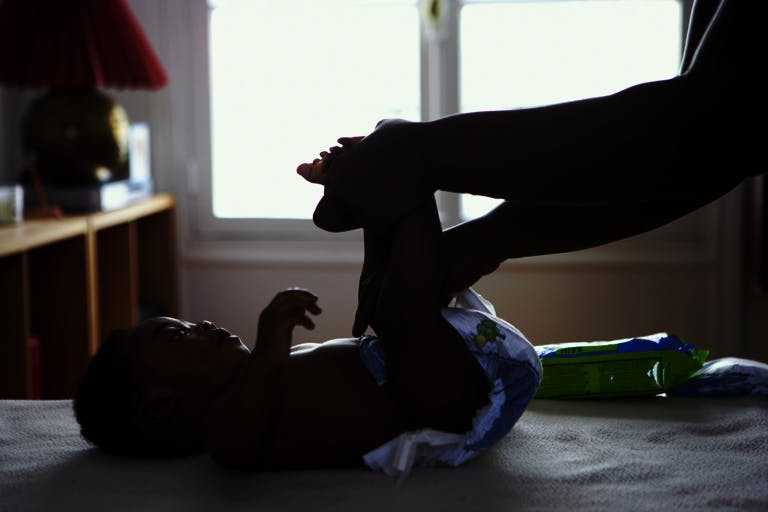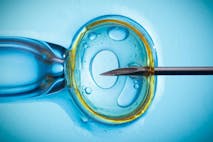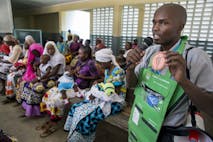
Man convicted of trafficking stolen body parts sentenced to six years in prison
Cassy Cooke
·
Yahoo! Finance oddly claims pro-lifers are contributing to ‘diaper deserts’
Sandra Salathe, a senior editor at Yahoo! Finance recently wrote an unusual op-ed claiming that the pro-life movement is keeping desperate women from accessing things like diapers.
Salathe, who also writes for Glamour, Self, and Shape magazines, argued that the presence of so-called ‘diaper deserts’ — areas where residents don’t have readily-available access to things like diapers that their children need — can be blamed on pro-life pregnancy resource centers.
Diaper deserts, like food deserts, often affect low-income families who don’t have access to a car or other reliable transportation. This means these residents can only get things like food and diapers from stores they can walk to, which are often convenience stores with more highly-priced items. Salathe noted that, according to the National Diaper Network, one-third of families in the United States can’t afford to buy diapers. And this can lead to serious consequences.
“When caregivers don’t have a sufficient amount of diapers to keep a baby clean, dry, and healthy, they often are forced to keep their babies in soiled diapers longer than they should or dump and dry used diapers so that they can be reused,” Bridget Cutler, founder and co-executive director of Moms Helping Moms, told Yahoo! Finance. “As a result, infants and toddlers are at risk of skin infections, open sores, urinary tract infections, and other conditions that may require medical attention.”
There is no denying that these are legitimate issues. Yet Salathe unquestioningly cited information from Equity Forward, a pro-abortion organization that regularly smears pregnancy resource centers without acknowledging their implicit bias. Ashley Underwood, the executive director of Equity Forward, complained that pregnancy resource centers convince women not to have abortions — and then don’t spend every single cent of their funding to give supplies to families in need.
“Instead of providing direct material support to people, they’re using this money for overhead costs to pay for staff salaries, to engage with SEO marketing professionals, to expand their outreach to promote themselves, and all sorts of things that are not providing services to people in need,” she said — complaining about something that every organization with brick and mortar facilities must do (paying rent/mortgage, utilities, staff, etc.) — adding, “They solely exist to deter people from getting abortion care.”
While it is true that pregnancy resource centers encourage women to explore all their options and inform themselves thoroughly before they make an irreversible decision to abort a child, they do also provide care, services, and material goods for pregnant women and families — which Yahoo! Finance even admitted.
But apparently, the problem is two-fold, according to Salathe: 1) pregnancy centers exist, and 2) they aren’t doing enough.
Article continues below
Dear Reader,
In 2026, Live Action is heading straight where the battle is fiercest: college campuses.
We have a bold initiative to establish 100 Live Action campus chapters within the next year, and your partnership will make it a success!
Your support today will help train and equip young leaders, bring Live Action’s educational content into academic environments, host on-campus events and debates, and empower students to challenge the pro-abortion status quo with truth and compassion.
Invest in pro-life grassroots outreach and cultural formation with your DOUBLED year-end gift!
“Since June when the Dobbs decision was released, we’ve definitely seen an uptick in rhetoric from anti-abortion centers,” Underwood claimed, neglecting to mention the violent rhetoric and actions against pregnancy centers by militant pro-abortion groups. “They are in the perfect position to help people, but they’ve existed decades before that decision, and we’ve seen that they don’t use this money towards helping people. So much of the money, specifically the public tax dollars they receive, goes towards promoting their own endeavors; not serving the communities in which they exist.”
Specifically singled out was Heartbeat International, one of the largest pregnancy resource center organizations in the country. And unlike Planned Parenthood — which receives more than half a billion taxpayer dollars every year — pregnancy resource centers, including Heartbeat International, have to operate almost entirely based on donations from their communities, and are staffed by volunteers. Like all non-profit organizations, money has to be spent on administrative needs, but typically, pregnancy resource centers do all they can to help women. Pregnancy centers are accountable and transparent with their income and expenses.
A 2019 report on pregnancy centers noted the fact that “[a] small percentage of government funding (17%) was provided to pregnancy center organizations or main centers while at least 90% of total PRC funding was raised through private donations.”
In just five years, over 800,000 lives have been saved by volunteers at pregnancy resource centers. Additionally, an estimated 2 million people receive care each year from these centers, with approximately $270 million in free services given — including ultrasounds, STD tests, pregnancy tests, prenatal and parenting education, and material items.
In 2019 alone, for example, over 1.2 million diapers (yes, diapers) were distributed by PRCs.
There are also 400 maternity homes offering housing for mothers in need.
And despite the complaints that pregnancy resource centers aren’t doing enough to help women, there is little evidence to show that organizations like Heartbeat International are doing anything to make the problem worse. Pregnancy resource centers provide help to women and their families in numerous ways, but ultimately, the problem Salathe has is clear, and it has nothing to do with diapers: it’s that pregnancy resource centers aren’t promoting abortion.
“We applaud Yahoo! Finance identifying the devastating impact lack of material resources, such as diapers, can represent for single moms and families,” Jor-El Godsey, president of Heartbeat International, said in a statement in response to the report. “Meeting pregnancy and early parenting needs has been a key effort for pregnancy help centers for decades. Yahoo! Finance misses the mark in imagining a world where reaching women in need can be done without any marketing or administration. Perhaps the half billion in taxpayer dollars Planned Parenthood is receiving for reproductive help could be reallocated to such diaper deserts.”

Live Action News is pro-life news and commentary from a pro-life perspective.
Contact editor@liveaction.org for questions, corrections, or if you are seeking permission to reprint any Live Action News content.
Guest Articles: To submit a guest article to Live Action News, email editor@liveaction.org with an attached Word document of 800-1000 words. Please also attach any photos relevant to your submission if applicable. If your submission is accepted for publication, you will be notified within three weeks. Guest articles are not compensated (see our Open License Agreement). Thank you for your interest in Live Action News!

Cassy Cooke
·
Analysis
Cassy Cooke
·
Analysis
Cassy Cooke
·
Analysis
Cassy Cooke
·
Analysis
Nancy Flanders
·
International
Angeline Tan
·
Analysis
Cassy Cooke
·
Analysis
Cassy Cooke
·
Analysis
Cassy Cooke
·
International
Cassy Cooke
·
Pop Culture
Cassy Cooke
·